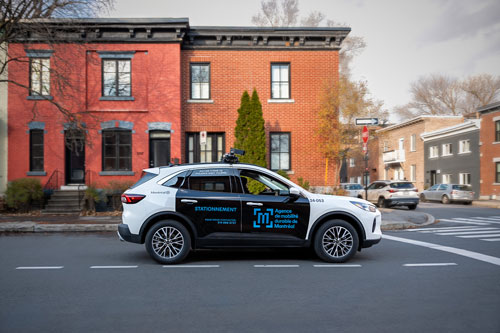Automated license plate recognition
Improving mobility
The agency is gradually rolling out automated licence plate recognition (ALPR) to facilitate parking management and to improve mobility in Montréal
This project is part of the agency’s initiative to update its monitoring strategy. ALPR technology uses cameras and GPS so that agents can read license plates and check whether vehicles are in violation of regulations at a specific place and time, while maintaining data anonymity.
ALPR will serve as a decision aid enabling agents to more efficiently check compliance with regulations that are difficult to monitor without technological support, such as in time-limited spaces and resident-only on-street parking zones.

Smart parking management for equitable street sharing
Through more efficient parking monitoring, the Agency aims to contribute to the fluidity, safety and accessibility of public spaces.
In the long term, this technology, already deployed in cities such as Paris, Amsterdam, Chicago and Vancouver, will enable us to :
- Speed up and automate certain tasks and help officers to better distribute their efforts, for more effective surveillance. For example, they will be better able to detect whether vehicles are blocking areas that are important for citizens' safety and access to public space, such as fire hydrants or private entrances;.
- Improve parking access for residents with stickers;
- Reduce fraud attempts through non-compliant stickers;
- Increase the rotation of vehicles in time-limited zones, always with the aim of facilitating equitable sharing of space;
- Enhance our knowledge of parking use with anonymized data collected by ALPR.
The agency is aiming for a gradual rollout across the city in 2025. Starting in June, our vehicles will be patrolling the boroughs of Outremont and western Plateau Mont-Royal daily. Officers in LAPI vehicles will issue tickets for all parking violations. LAPI technology will be used to monitor SRRR permit zones and time-limited zones.
We care about your privacy
Cameras will take a photograph of the license plate on the back of a vehicle and convert it into data. The data will then allow us to determine whether the vehicle is in violation, at that specific place and time, using geolocation. Also note that no personal data are associated with the license plate.
Moreover, if the system detects the presence of individuals, the photo will automatically be blurred so that no one is identifiable.
As a responsible organization, the agency makes security and privacy a priority, and processes all data collected in accordance with the Act respecting Access to documents held by public bodies and the Protection of personal information (CQLR, c. A-2.1), to which it is subject.
